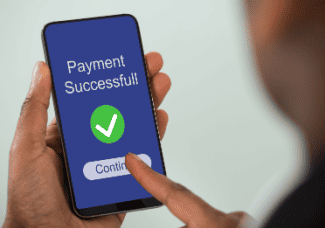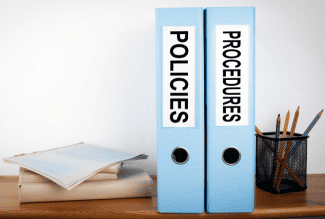How to Make Money in Real Estate: A Guide for Beginners
 Becoming a successful real estate investor is an attainable goal for many people. With the right strategies, real estate offers a variety of ways to build long-lasting wealth and passive income streams. This guide explores over seven different methods to profit from real estate investment for beginners. Sharing knowledge and information holds great importance for me. I consistently produce YouTube videos and podcasts, sharing my wealth of experience and offering invaluable insights to assist you in making well-informed investment decisions within the real estate sector. Feel free to explore them.
Becoming a successful real estate investor is an attainable goal for many people. With the right strategies, real estate offers a variety of ways to build long-lasting wealth and passive income streams. This guide explores over seven different methods to profit from real estate investment for beginners. Sharing knowledge and information holds great importance for me. I consistently produce YouTube videos and podcasts, sharing my wealth of experience and offering invaluable insights to assist you in making well-informed investment decisions within the real estate sector. Feel free to explore them.
1. Leverage Appreciating Property Values
The vast majority of residential and commercial real estate appreciates over time, meaning the property becomes more valuable due to factors like demand and inflation.
For investment property owners, appreciation means the value of your real estate assets rises without you having to do anything. As your properties become more valuable, your equity increases – equity is the difference between the current market value and the remaining principal mortgage amount owed.
Here are some key ways real estate can appreciate in value:
1) Properties typically gain value over time as neighborhoods and areas become more popular and desirable places to live. As the broader location gains value, so does your individual property.
2) Making improvements is one of the best ways to directly increase a property’s worth. Renovations and upgrades like remodeling kitchens and bathrooms, enhancing the exterior’s curb appeal through landscaping, adding new architectural features, installing higher-end finishes, replacing roofs, upgrading HVAC and electrical systems – all of these add tangible value. Even smaller fixes like new exterior paint and fixtures boost appeal and sale price.
3) Commercial property values directly relate to the success of the business tenants operating inside the buildings. Thriving, high-revenue companies can pay higher rents and boost the building’s profitability, in turn raising its market value.
As an investor, continually enhancing your properties over time is a smart long-term strategy that leads to greater appreciation and equity to build wealth through real estate.
2. Generate Consistent Rental Income Through Buy and Hold Investing
One of the top benefits of investment real estate is its ability to generate consistent cash flow through rental income. There are several types of rental properties suitable for buy and hold strategies:
Long-Term Residential Rentals
This involves purchasing properties like single-family homes, duplexes or small multi-family buildings which you rent out to tenants on longer term leases like 1-year agreements. The key advantage of long-term buy and hold rentals is steady, predictable monthly cash flow. You’ll sign either annual leases that renew each year, or conduct occasional turnover bringing in new tenants when existing renters move out.
A profitable rental property brings in enough rental income each month to cover all your ownership and operating expenses like mortgage payments, taxes, insurance, maintenance, etc., with excess income left over. This positive monthly cash flow can be used to fund your lifestyle, invest in new properties or build a retirement nest egg.
Long-term residential rentals allow investors to build lasting wealth through consistent passive income. Many other investments like stocks and bonds don’t provide this type of recurring cash flow.
Get a Free Multifamily Loan Quote
Access Non-Recourse, 10+ Year Fixed, 30-Year Amortization
Short-Term Vacation Rentals
For investors seeking an alternative to long-term tenant commitments, short-term vacation rental properties are a great option. These rentals cater to travelers and tourists seeking temporary accommodations for a few nights or weeks at a time.
The short-term rental concept allows you to own a property and rent it out frequently throughout the year for short durations. These work especially well in popular tourist destinations. If you purchase a vacation home, when you’re not personally using the property you can effectively rent it as a short-term rental to help offset some or potentially all of your mortgage and expenses.
Like traditional long-term rentals, short-term vacation properties provide ongoing income through frequent turnover of rental guests. Simultaneously, you also gain the benefits of long-term appreciation.
Renting Vacant Land
Even if you own vacant land without an occupied building, you can create income potential by renting out the land itself. While not as lucrative as having an operating property on the site, you can generate side income by renting land for purposes like storage, events, farming, etc. Use this supplemental cash flow to cover some holding costs while saving up to eventually develop the land down the road.
Commercial Properties
Commercial real estate investing involves owning properties rented to business tenants, like office buildings, retail centers, industrial warehouses, medical offices, etc. This sector can produce very stable returns from long-term business tenants. The largest risk is vacancy if companies go out of business during recessions.
As the landlord, your responsibility is maintaining the building and collecting rental income from tenants to cover expenses and turn a profit. The advantage over residential rentals is businesses tend to sign longer leases and have greater financial resources.
3. House Flipping For Short-Term Profit Potential
Flipping houses as an investor involves:
- Purchasing an undervalued, distressed property ripe for flipping potential – foreclosures, short sales, fixer-uppers, etc.
- Renovating, repairing and improving the entire property. Cosmetic upgrades also boost appeal.
- Quickly reselling the fixed-up home for a higher price than your purchase and rehab costs.
Among the 12 multifamily properties where I was involved as a general partner, eight have successfully completed their investment cycles. The best-performing property achieved an impressive 42% Internal Rate of Return (IRR) for passive investors, showcasing our track record of delivering exceptional results. However, successful house flipping requires deep real estate and renovation expertise to execute profitably. When done well, fix-and-flip projects can produce huge returns. But they also come with higher risk than buy and hold strategies. It’s best suited for experienced investors who deeply understand their local housing market’s flipping potential.
Here are some tips for flipping success:
- Run the numbers thoroughly – don’t overpay for purchase prices. Build in conservative budgets for renovations and holding costs before selling.
- Focus on renovations that maximize ROI like kitchens, bathrooms and curb appeal. Avoid over-improving the neighborhood.
- Work quickly and efficiently – time is money. The faster you complete projects and sell, the greater your potential profit.
- Lean on experts like contractors and real estate agents to assemble the best support team.
- Stick to a specialist market niche you know extremely well.
4. Acquire Turnkey Rental Properties For Instant Cash Flow
Some real estate investors sell off their existing rentals for quick liquidity. They may be moving on to new projects, need capital for other investments, emergency situations, etc.
These motivated sellers place their tenanted investment properties on the market as turnkey rentals requiring little additional work before generating cash. For buyers, the advantage of turnkey real estate is purchasing an asset that instantly produces rental income without transitional hassles like fixing up or locating tenants. If you want hands-off, passive investment, turnkey properties allow fast entry into cash flowing real estate.
Carefully vet any turnkey rentals before buying:
- Review financials like rent rolls, operating costs and profitability.
- Inspect current tenant leases and screen tenant histories.
- Visit in-person to evaluate maintenance needs and local area.
- Confirm all paperwork and documentation is complete and legally sound.
Though costlier than distressed fixer deals, turnkey rentals offer an easier path to real estate income.
5. Invest In Real Estate Without Physical Property
If direct ownership of physical buildings or land doesn’t appeal to you, there are several ways to invest in real estate without being a hands-on landlord:
Real Estate Investment Trusts (REITs)
REITs are companies that own and operate income-generating commercial real estate. As a REIT shareholder, you earn passive income through dividends. REITs provide portfolio diversification and lender expertise. The downsides are lack of control and lower appreciation than physical properties.
Real Estate Crowdfunding
Crowdfunding pools money from multiple investors to finance real estate projects for a share of cash flows. You can diversify small amounts across many properties while leaving operations to professionals. Upsides are low barriers to entry and passive hands-off investing.
Real Estate ETFs and Mutual Funds
Invest in bundled real estate assets like bundled debt or securities through professionally managed ETF and mutual fund products. This allows diverse exposure to real estate as an asset class without owning physical property.
Real Estate Investment Groups (REIGs)
For a more active approach, you can team up with other private investors in a real estate investment group. REIGs take on projects like flips, rentals and new developments for collective sharing of risks and rewards.
Wholesaling
Wholesaling involves contracting discounted, undervalued properties and immediately reselling them to buyers at higher prices for fast profit. It requires less capital but still extensive real estate networking and negotiating skills.
6. Inflation Resistant Investing
Historically, real estate values and rents tend to rise faster than the overall inflation rate. Well-selected properties can appreciate steadily and boost rents to keep pace. This shields real estate investors from inflation erosion better than paper assets like bonds or cash.
As a landlord, you can incrementally increase your rental rates across your portfolio as existing leases renew to maintain positive cash flow in inflationary environments.
7. Strategic Refinancing to Access Equity
If your investment property has a mortgage, refinancing into a lower interest rate can potentially reduce your payments and increase cash flow.
You may also be able to convert built-up home equity into usable cash via a cash-out refinance. You can use this newly-unlocked capital to fund renovations, new property purchases or other investments.
Conclusion
This guide provides an overview of many proven strategies to profit from real estate investing for beginners. While direct physical property ownership has higher risks and demands, it also produces the greatest returns through compelled appreciation and leveraged rental income. Investing without ownership also offers passive options like REITs and crowdfunding to diversify into real estate.
The optimal approach depends on your specific investing style, goals and available capital. With the right strategy, real estate remains one of the best vehicles for building lasting, multi-generational wealth and passive income streams.
Source: Sunrise Capital Group















 Accessibility
Accessibility